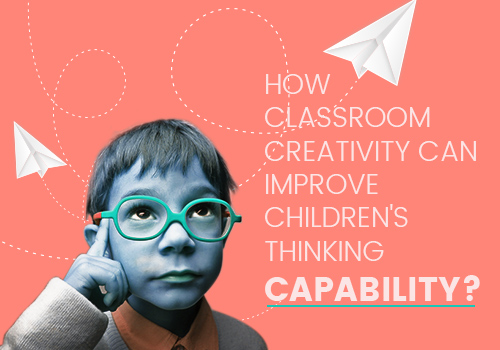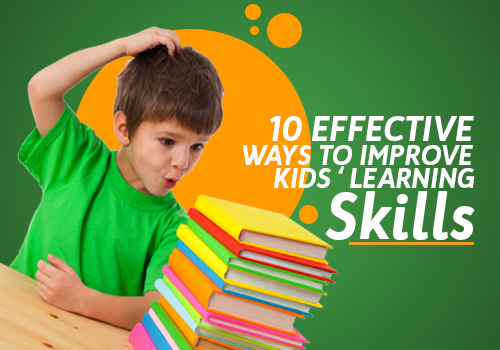One of the key features of a successful student will be his thinking skills and he gets the basement for this quality from his classroom. Only a creative student can be a good thinker and that is why scholars round the globe are yelling for creative classrooms. There is only a minority of the kids who are born with creative mindsets and it is the good classroom experiences that develop creativity and thinking capability in the rest of the kids.
Those who are born creative might lose their talents if not encouraged in the right way. Schools or classrooms are the place where kids spend more than half of their life time and that is why it is the right place to foster different skills and talents in kids. Even when the curriculum lacks the right mix of creativity, schools are taking initiatives to promote classroom creativity with innovative teaching strategies.
Some may be wondering how classroom creativity can actually improve thinking capability in children. Here let us have a look at the widely accepted and followed classroom activities or strategies that foster creativity in kids that helps them to grow up with good thinking skills.
- Open-ended projects: In normal project works, students would be given guidelines, set of topics to choose from and an evaluating technique. But this open-ended technique helps kids to be more creative with their ideas and bring up interesting works. The process and results of the project are related to how amazingly he/she can think about different concepts. Rather than sticking to tough guidelines, they can experience extreme excitement and would be glad to explore different ideas. This activity can very well enhance their thinking capability and feel amazed about their own skills.
- Creative team building: Smart schools always include team building activities along with covering up curriculum to help kids excel in exams. Some dedicated time for such activities per week or fortnight can help kids to get to know each other and help others to follow their goals too. An interesting task can be given after separating them into teams and they can work on it together to bring out amazing results. The fun team building activity can not only help them to relax in between the tough study time but also gives them time for creative team work. This helps to improve their thinking process and come up with interesting thoughts as well as to accept others’ thinking process.
- Student teachers: It is an innovative teaching strategy in which students take the teaching role. This is an interesting activity in which students would be given a topic to teach and will be given time to do their own research and thinking before presenting it. This would also improve their confidence level and oral communication skills and other students would be excited to learn the topic when taught by their peer. This is also an opportunity to experience the student way of thinking about a particular subject.
- Brainstorming sessions: This is another classroom activity that can stimulate problem solving and intellectual thinking. Some puzzles or activities that challenge their brain give way for a lot of thinking and kids would be glad to showcase their excellence. Such activities that trigger their thinking would brush up their brain power and memory helping them to grow up smarter. Brainstorming web, fill up the blanks with some funny ideas or asking them to give a speech on a randomly given topic which are some of the interesting activities followed in such sessions.
- Story telling/thinking: This is a good strategy that helps kids to go through an imaginative state of mind. When teachers tell a story, they would see the characters and scenario in their mind that is designed out of their thinking process. Try to include some interesting stories which can encourage curiosity in them that drives their thinking world. Another version of this activity is to let them come up with a story a day or let them write it up. In addition to notebooks, bring some crayons, clay or such materials in classrooms to stimulate their creativity and let them express their stories through some sequence of pictures. Promote reading in them right from the childhood as good readers become good speakers, thinkers and better human beings.
- Open-ended questions: It is good to ask some open ended questions when they leave home for a weekend or vacation. Instead of just playing all around during their free time, they can spend some time to think about such questions and come out with interesting answers when they are back to school. And the questions can be a little tricky so that children can be more creative with their answers. This is a good strategy to promote some independent thinking in students rather than just following the daily lessons. This is also an activity by which teachers can encourage dissenting views.
- Classroom debates: A good teacher always encourages discussions in class that would gear up their thinking process. Debate is the best form of classroom discussions performed so far as each student gets a chance to come up with their point of view or thinking about a particular topic. This helps them to think critically about the subject while respecting other’s views. Students who make the best use of it grow up as good communicators. Rather than a competitive atmosphere, a collaborative environment should be promoted where kids support peer learning.
- Unconventional learning materials: Students would usually get bored when going through the routine class time. Instead, they would be glad to bring in some creativity in class so that they can think out of the normal. Teachers should take initiatives to bring in some unconventional learning materials once in a while. This can be a TED talk show or podcast of some well read speakers that can really impress or inspire the way children think about a topic. With the influence of digital era, smart devices are becoming an integral part of classrooms. Smart boards, interactive video sessions as well as education apps are triggering their creativity and enthusiasm.
- Imaginative thinking activities: The borderline between imagination and reality is negligible when it comes to kids. That is why some imaginative activities such as puppet show are found effective to teach kids. This would gear up their imaginative thinking capability and they understand the concept with a creation of images in their mind. There are also some games that trigger imagination, decision making and problem solving skills in kids. This classroom activity can be interactive with some imaginative indoor scenarios. Another way by which teachers stimulate thinking is by giving them chance to build up a new game that carries some new concept. Foreign language learning sessions with interactive activities is another creativity boosting activity that brings lot of fun.
- Work out passions: There should be a dedicated hour or period at least once per week for kids to work out their passions. Give your students time to express themselves in the way they prefer whether it is singing, dancing, poems, painting, drawing, acting and what more. Students can best utilize the time to explore their creativity and passions. Sports sessions are also really effective to set a goal and work towards achieving it. Including arts along with curriculum is an interesting way to dig deeper into your thinking instincts. Rather than just considering it odd or unconventional, it is important to set aside some time for creativity.
A creative classroom is beneficial for both students and teachers and the overall learning phase would turn out more productive. Such a classroom set up would stimulate the kids’ mind and keeps them awake always for fresh and innovative ideas. It is important not to force them into some activity which they barely have any interest but choose activities that help them to follow their interests and passions.
Classroom is the best place to find the hidden talents in children and a good teacher should take initiatives to foster their creativity and artistic skills during their school days. Along with interesting activities, kids should also be given a quality resource of good books and visual materials.
Gaining the child’s interest and maintaining it is a bit challenging for any classroom and such appealing materials and activities might do the trick. Also there are lots of education apps that trigger creativity and thinking in kids which keeps them educated and entertained.

